Pencils: A Favorite Tool for Artists
Students and art majors are certainly familiar with the 2B pencil, an essential tool for anyone studying fine arts.
What you may not know is that pencils are classified by the hardness of their cores.
Graphite pencils, in general, are divided into 18 hardness levels such as 6B, 5B, 4B, 3B, 2B, B, HB, F, H, 2H, 3H, 4H, 5H, 6H, 7H, 8H, 9H, 10H… The number before the letter indicates whether the pencil is harder or softer. Additionally, there are softer pencils like 7B, 8B, and 9B that cater to specific needs such as painting.
Each Pencil Type Shows Different Shades
Recently, a drawing by Japanese artist Haruna Tokimatsu provided a more visual understanding of the differences between various pencil types.
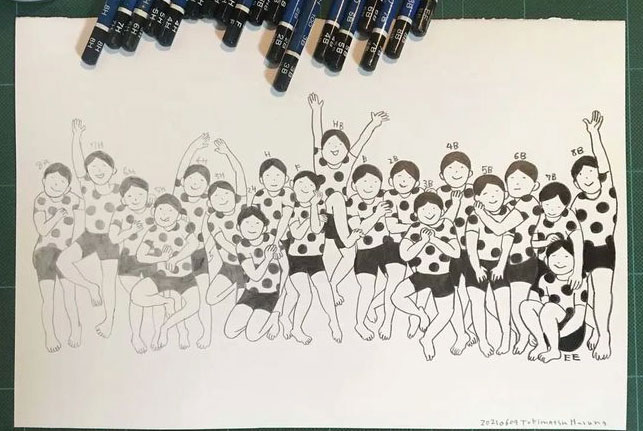
A more visual understanding of the differences between pencil types.
“The pencil is produced by Staedtler, comparing the differences from 8H to 8B.” On her Twitter account (@tokima_t), Haruna used an image to highlight the differences between the 8H and 8B pencils.
Haruna discovered these pencils among her husband’s grandfather’s belongings, which are about 30 years old.
“My husband’s grandfather was an artist and left behind many Staedtler pencils. When I used these pencils alongside my own, I found that I could draw ‘vibrant’ blacks. So, I created an illustration to compare them. I was very surprised by the differences in the drawing.”
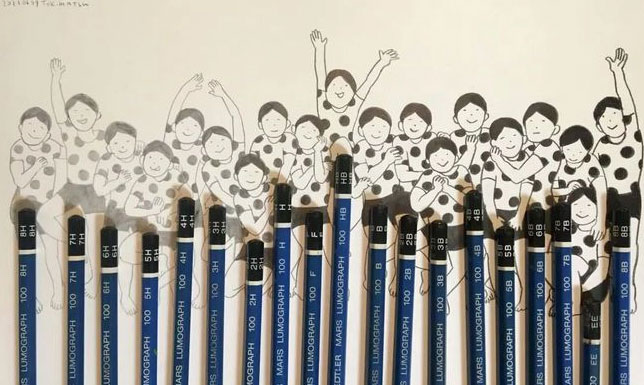
In her drawings, although the lines are similar, a closer look reveals that each character is distinctly different.
Haruna notes that those who enjoy drawing are no strangers to Staedtler pencils, as she also used this brand during her entrance exam for the Fine Arts University.
Born in 1984 in Chiba, Japan, Haruna graduated from Tama Art University in 2007, majoring in oil painting. She often creates works that capture everyday moments and excels in pencil drawing without needing an initial sketch. In her style, while the outlines may be the same, a closer inspection shows that each character is uniquely different. Haruna hopes to use such differences to reflect the inner world of those who are indifferent to the outside world.
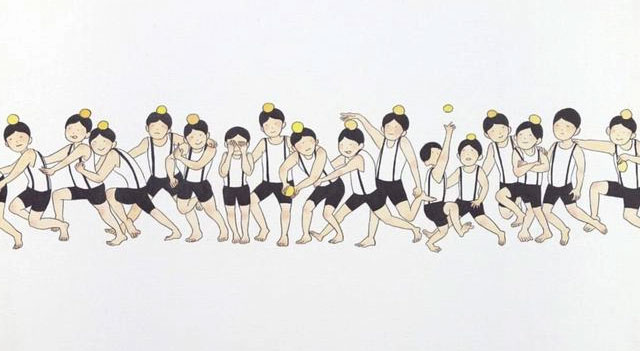

“Loneliness”
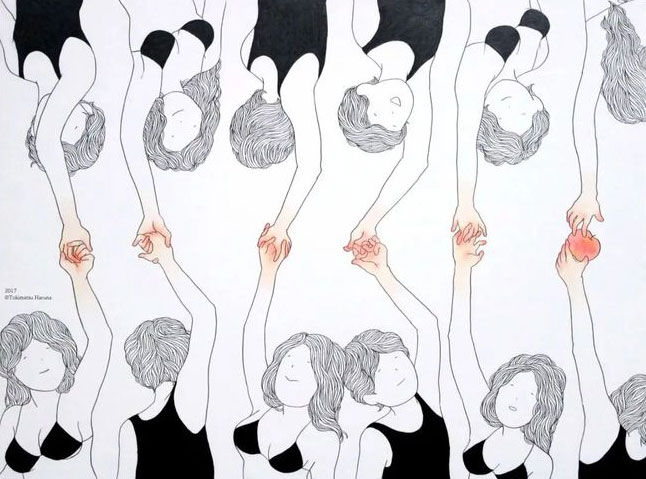
“Left Hand Right Hand”
“Initially, I often drew people like this. These characters are not defined by gender or age; they are simply considered ‘humans.’ I enjoy drawing dynamic individuals, so I choose simple everyday clothing, allowing me to use body lines to convey meaning.”
Haruna has been drawing with wooden and mechanical pencils for nearly 15 years. Recently, she discovered that using an 8H pencil makes drawing even more enjoyable.

Using an 8H pencil makes drawing even more enjoyable.
In Haruna’s Twitter posts, many people shared their personal preferences for different pencils.
“H is easy to use because you don’t need to press hard.”
“I like using 4B because it’s easy to get graphite on paper; I can write something even while sleeping.”
“I used F in high school and then started practicing drawing. I didn’t even know where to buy Staedtler pencils.”
The Birth of the Pencil
The history of the pencil is quite ancient, and the discovery of graphite was key to its creation.
Pencils originated in ancient Rome over 2,000 years ago. At that time, the pencil was very simple, merely a stick of graphite or even a block of graphite encased in a metal tube.
The modern pencil was developed in England in the 16th century. In 1564, a black mineral called graphite was discovered in Borrowdale. Graphite can leave a shiny black mark on paper like charcoal, hence it was referred to as “graphite.”
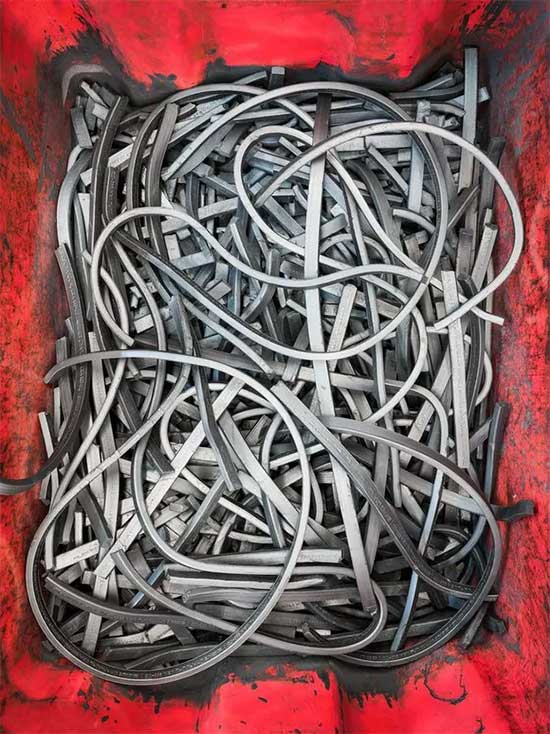
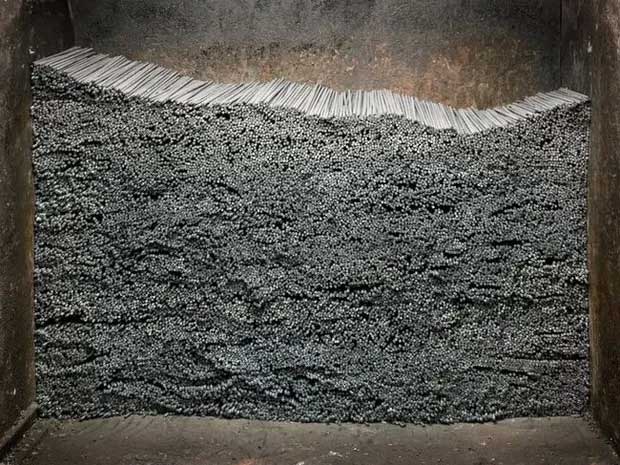
Pencil core.
Since graphite is very soft and brittle, a supporting frame was necessary. Initially, graphite sticks were wrapped in string. Later, graphite was placed into hollow wooden sticks, leading to the creation of wooden-cased pencils.
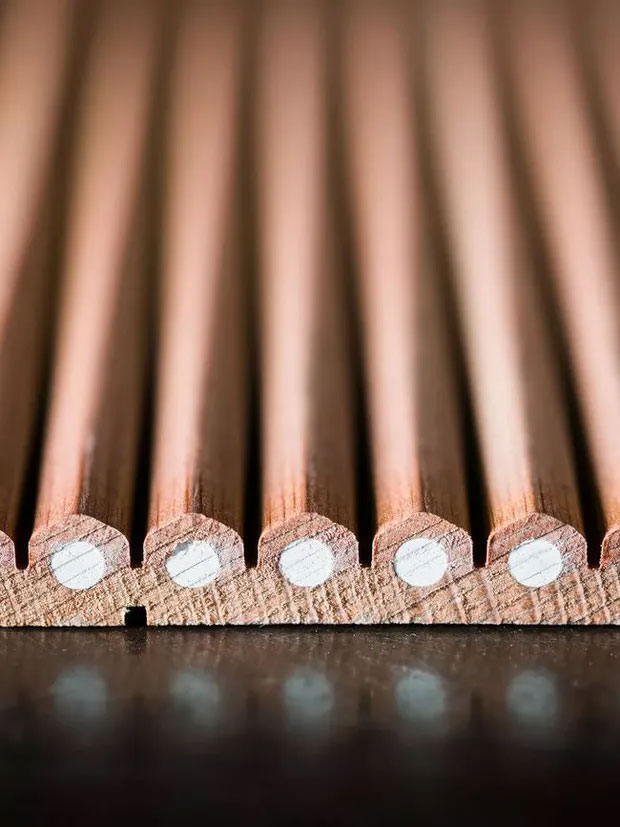

Graphite was placed into hollow wooden sticks, leading to the creation of wooden-cased pencils.
Later, France also discovered graphite mines; however, the quality was low and the reserves were limited. French scientist Auguste Comte mixed clay with graphite and baked it in a furnace to create a pencil that was both easy to use and durable. The hardness of the graphite varies depending on the clay-to-graphite ratio.
We often see letters like B and HB marked on the ends of pencils. These indicate the hardness and darkness of the pencil core. B refers to darkness, and H refers to hardness, so HB is a pencil that has moderate hardness and darkness, suitable for writing.
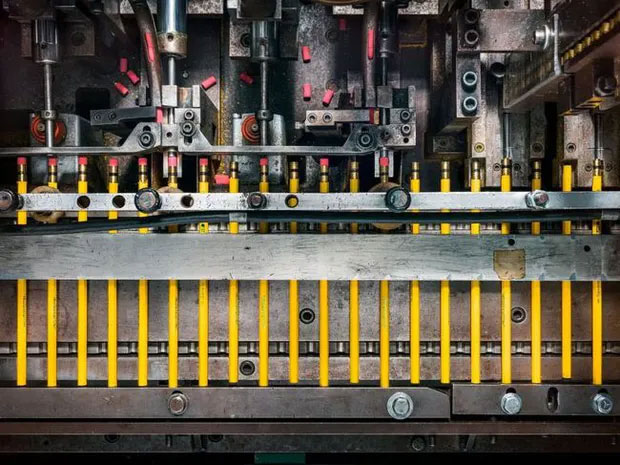
In 1662, the city of Nuremberg in Germany was the birthplace of the first mass-produced pencil. Supported by companies like Faber-Castell (founded in 1761), Lyra, Staedtler, and others, the pencil industry thrived during the 19th-century Industrial Revolution.
The German brand Staedtler is favored by artists and graphic designers. Officially established in 1835, Staedtler is known for offering a wide range of pencils, from 12B to 10H.
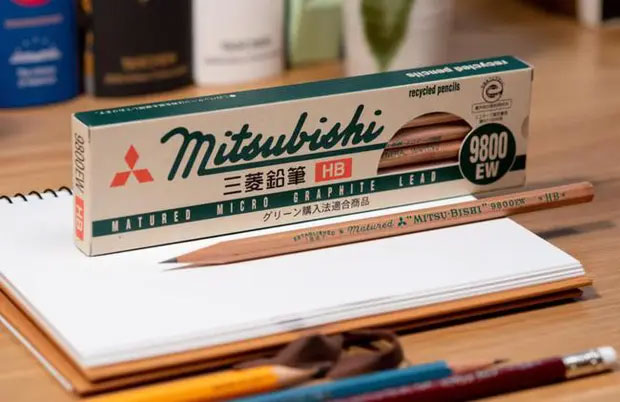
Another notable pencil brand is Mitsubishi Uni-ball from Japan. Many cartoon artists trust this brand’s products.
In 1992, to commemorate the 500th anniversary of Columbus’s discovery of the Americas, Fenrich Dream invited the most famous “master of colors” in Japan, Junichi Nomura, to oversee and launch the first version of “500 Color Pencils,” becoming the world’s most colorful pencil project.
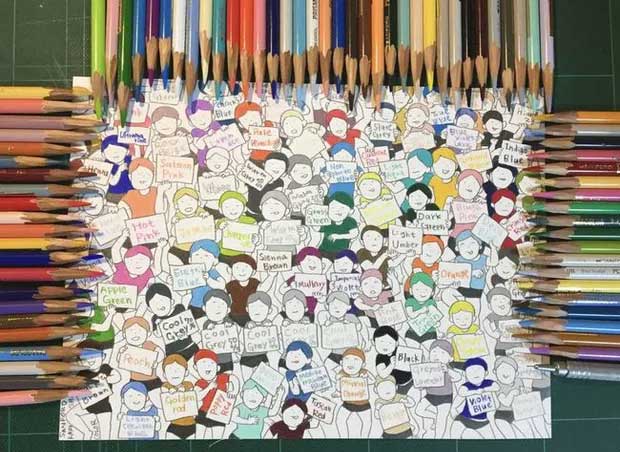
Pencils are a favorite among artists.
In 2017, Japan’s Felissimo released the fourth version of colored pencils. In addition to complete colors, the names of each color are also very vivid. Cherry cake, rosemary, peony in Hase-kannon temple, first lipstick, Sangria drink from Madrid, hanging nightshade flowers by the window, temptation of black grape soda, melting snow and spring flowers…
Pencil.com is a comprehensive website in the U.S. providing all sorts of information about pencils, including history, brands, sales, and related artists. Each week, they feature an artist who specializes in using pencils, ranging from very famous to ordinary.
Pencils and Artists
It can be said that pencils are a favorite tool for artists. In the early 1960s, British artist David Hockney also loved using pencils for his drawings.
When Hockney first entered the art world, Abstract Expressionism was widespread across Europe. In Hockney’s paintings from the early 1960s, the images sketched with simple lines reflect the childlike scrawling style of children’s drawings.

Abstract elements appear, making the paintings full of irony and satire.

In a drawing titled “Cha Cha Cha” (1961), Hockney depicted a dancer friend he met while studying at the Royal Academy of Arts.
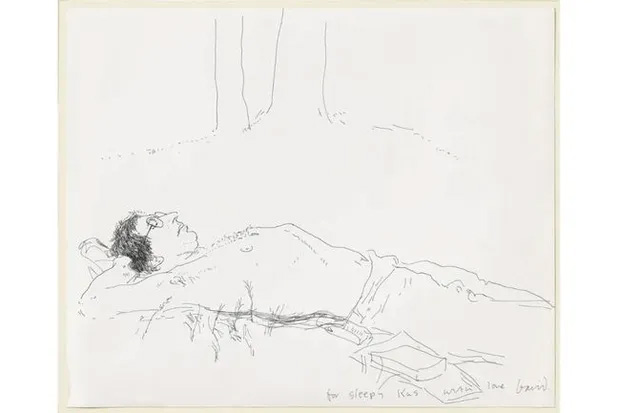
Hockney’s life is captured through his sketches, with thousands archived in California. When David Hockney moved into an apartment on Powis Terrace (Notting Hill) in London in 1963, the first thing he did was paint a sign in capital letters at the foot of his bed that read “Get Up Now.”
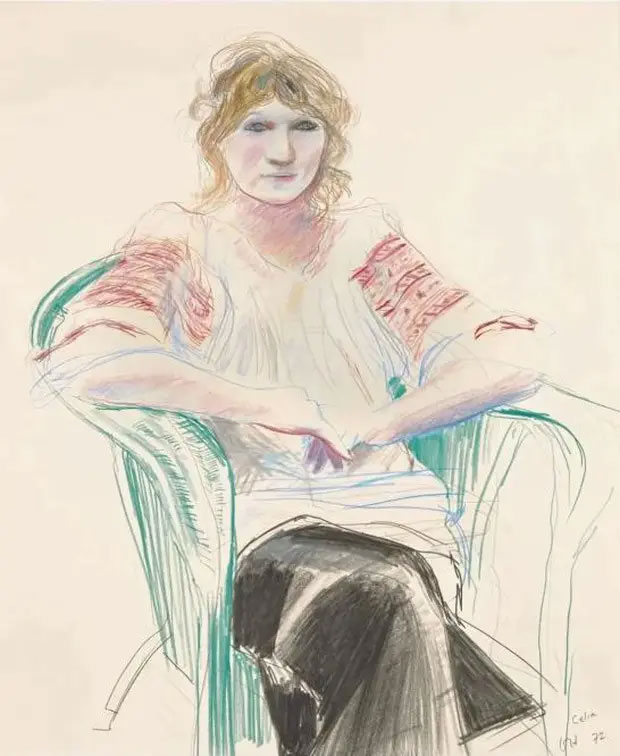
In most of his paintings, Hockney focuses on rendering heads, particularly hair, while the rest of the composition consists of rough outlines. Can you guess what type of pencil Hockney used?

Diego Fazio is an Italian pencil artist. With a pencil in hand, Diego captures the texture of water as realistically as a photograph.
Brandi Kincaid is an illustrator based in Washington State, USA. Here’s how he introduces himself: “I try to draw for an hour each day, and I love using that time to capture the world around me. Although I have recently ventured into new forms of drawing, including different materials, pencils will always hold a special place in my heart.”





















































